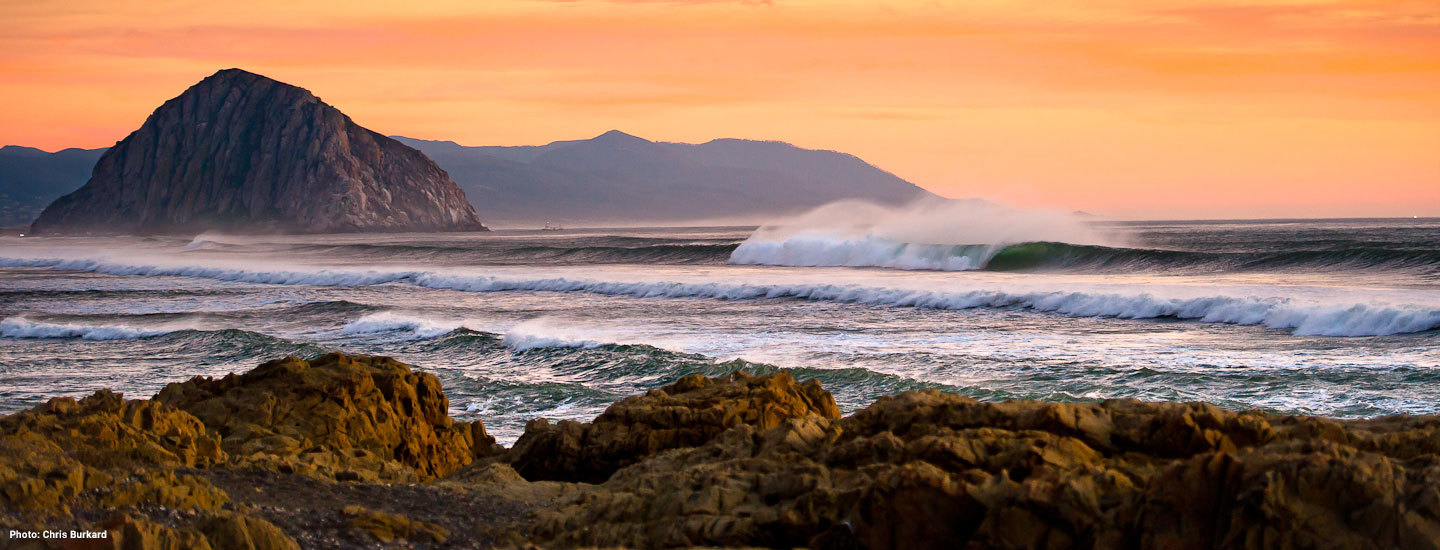
05.30.24
Will you be surfing tomorrow? A case for the Morro Bay Battery Storage Facility
By Case AdamsJust imagine, a swell has come up and you head to the beach, board under arm ready to paddle out. But today’s swell has also arrived with a sheen, with blackened oil-soaked birds and other sea life washing up on the beach. It’s an oil spill, and you are out of the water until the spill gets cleaned up.
Yes, it has happened. Some spills have been cleaned up relatively quickly. Others have taken years. And more will come unless something changes.
This is not the only environmental risk we surfers face: A future where the ocean waters will be so polluted, the air so thick with soot, and water temps so hot that our oceans will be unsurfable.
Yes, a catastrophe upon a catastrophe: That’s where we’re heading as an oil-centric society, and the buck will unfortunately stop with us surfers not being able to surf one day.
But there is a glimmer of hope: The conversion to solar, wind and hydro energy managed by battery storage.
Yes, we are moving towards a day when solar, wind and hydro energy can replace our gas powered, soot-belching, groundwater oil leaking energy plants. On April 14, 2024, Stanford professor Mark Jacobson showed that 100% of California’s electricity demand was met by wind, solar and hydro at some part of the day for 30 of the previous 38 days.
But because the sun doesn’t shine all the time and the wind doesn’t blow all the time, we need to store that electricity and dole it out when needed. Enter battery storage facilities.
California now has about 10,000 megawatts of battery storage. This is enough to supply 10 million homes with electricity. Battery storage is the key to applying our solar, wind and hydro electricity into the grid around the clock.
Battery capacity is critical to being able to apply renewable sources of energy into our grid as we need it. Proving this out, it was California’s fleet of battery facilities that allowed California to deal with the power demand during the record-breaking heat wave of 2022.
Safe battery storage facilities are being built throughout the United States, but California, Texas and Washington are leading the pace. California aims to be powered by 100% renewable sources by 2045.
Getting there won’t be easy. We need more battery storage to handle the building out of solar and wind generation.
This is the point of converting Morro Bay’s decrepit rusted-out oil facility that leaked oil into the ground and polluted the air and water for decades, with a clean and safe battery storage facility, a project that Vistra has proposed to Morro Bay on property Vistra already owns.
Vistra will demolish the rusted-out pock-marked smoke stacks and the rusty-siding panel-missing buildings (have you taken a close look at this nightmare lately?) free of charge. Then Vistra will replace these with a minimalistic futuristic battery storage facility with a capacity of 600 megawatts. Again, free of charge, whilst investing almost a billion dollars into the Morro Bay economy resulting in higher property tax payments for years to come and development of the rest of the site that would restore the City’s budget to fiscal health.
Because the grid is built into the old power station, this location will allow energy to be delivered into the California grid with great efficiency.
The good news is that according to the Draft Environmental Impact Report commissioned by Morro Bay, the facility will not yield significant environmental threats to the surrounding ground, bay, ocean or air.
According to this 2024 DEIR, “Implementation of the proposed project would not involve uniquely hazardous uses, and its operation would not be expected to cause environmental accidents that would affect other areas. Safety systems would incorporate operational measures, maintenance standards, and passive design considerations, including monitoring, automatic and manual protection elements, engineering designs, site layout designs (e.g., battery spacing and orientation), and explosion prevention protection, among other features.”
Contrary to deceptive messages broadcast by some, the battery containers or buildings would have safety systems to guard against water intrusion and fire, and will not dispose chemicals into the surrounding Bay or ocean waters. Yes, batteries are a lot safer than oil plants. This is why practically every device and vehicle we own has a battery.
Furthermore, Vistra intends to only build out 24 acres of the 107-acre property. This will leave a large swath of the property available to build out a park or trails to walk or bike through.
This will leave local surfers with more natural habitat, less toxicity, and a greater assurance of being able to surf our local breaks for the foreseeable future.
References:
BESS Draft Environmental Impact Report (EIR), March 2024 - Volume 1 of 2
BESS Draft Environmental Impact Report (EIR), March 2024 Appendices - Volume 2 of 2
Morro Bay Community Presentation by Vistra Corp. https://morrobayenergystorage.
Lewis M. California exceeds 100% of energy demand with renewables over a record 30 days. Electrek. April 15, 2024. https://electrek.co/2024/04/
Plumer B and Popovich N. Giant Batteries Are Transforming the Way the U.S. Uses Electricity - The New York Times (nytimes.com) May 7, 2024.
About the Author
Case Adams lives and surfs in Morro Bay, and has been surfing shortboards since the early 70s. He's written 32 books on the environment and natural health and has been a Surfrider member for decades
